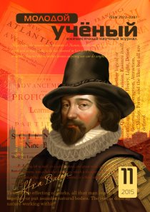Literature adds to reality, it does not simply describe it.
It enriches the necessary competencies that daily life requires and provides;
and in this respect, it irrigates the deserts that our lives have already become.
C. S. Lewis
In the broadest sense, imagery (vivacity, visibility, colorful images) is an essential attribute of any type of art, a type of reality awareness from the aesthetic standpoint. Imagery receives the most complete manifestation in literature. It is achieved by means of various stylistic devices: metaphor, metonymy, figurative comparison, epithet, paraphrase, rhetorical question, ellipse, etc.
Here, there are some examples of stylistic devices in W. Shakespeare’s plays:
1) Metaphor (a way of describing something by referring to it as something different and suggesting that it has similar qualities to that thing) [6].
e.g. “Look, love, what envious streaks
Do lace the severing clouds in yonder east.
Night’s candles are burnt out, and jocund day
Stands tiptoe on the misty mountain tops.” (from “Romeo and Juliet”).
Rush on his host, as doth the melted snow
Upon the valleys, whose low vassal seat
The Alps doth spit and void his rheum upon (from “Henry V”).
2) Metonymy (is a figure of speech in which a thing or concept is not called by its own name, but by the name of something intimately associated with that thing or concept) [3].
e.g. Friends, Romans, countrymen, lend me your ears (from “Julius Caesar”).
3) Simile (an expression that describes something by comparing it with something else, using the words “as” or “like” [10].
e.g. Doubtful it stood,
As two spent swimmers that do cling together
And choke their art (from “Macbeth”).
Is love a tender thing? It is too rough,
Too rude, too boisterous, and it pricks like thorn (from “Romeo and Juliet”).
4) Hyperbole / exaggeration (a way of describing something by saying it is much bigger, smaller, worse etc. than it actually is) [4].
e.g. Thy crown does sear mine eyeballs (from “Macbeth”).
Will all great Neptune’s ocean wash this blood
Clean from my hand? No, this my hand will rather
The multitudinous seas incarnadine,
Making the green one red (from “Macbeth”).
5) Allegory (the representation of abstract ideas or principles by characters, figures, or events in narrative, dramatic, or pictorial form [1].
e.g. Call me but love and I’ll be new baptized (from “Romeo and Juliet”).
6) Personification (the representation of a thing or a quality as a person, in literature or art) [8].
e.g. From love’s weak childish bow, she lives uncharmed (from “Romeo and Juliet”).
No night is now with hymn or carol blessed.
Therefore the moon, the governess of floods,
Pale in her anger, washes all the air,
That rheumatic diseases do abound (from “A Midsummer Night’s Dream”).
7) Parallelism (when writer logically links two ideas by using parallel grammatical forms within a sentence) [7].
This royal throne of kings, this scepter’d isle,
This earth of majesty, this seat of Mars,
This other Eden, demi-paradise,
This fortress built by Nature for herself
Against infection and the hand of war,
This happy breed of men, this little world,
This precious stone set in the silver sea,
Which serves it in the office of a wall,
Or as a moat defensive to a house,
Against the envy of less happier lands,
This blessed plot, this earth, this realm, this England … (from “Richard II”).
8) Allusion (something said or written that mentions a subject, person etc indirectly) [2].
Well, in that hit you miss. She’ll not be hit
With Cupid’s arrow. She hath Dian’s wit.
And, in strong proof of chastity well armed
From love’s weak childish bow, she lives uncharmed (from “Romeo and Juliet”).
9) Repetition (When a specific word, phrase, or structure is repeated several times, usually in close proximity, to emphasize a particular idea) [5].
e.g. O wonderful, wonderful, and most wonderful
wonderful, and yet again wonderful, and after that,
out of all whooping! (from “As You Like It”).
10) Pun (an amusing use of a word or phrase that has two meanings, or of words that have the same sound but different meanings) [9].
e.g. It is the unkindest tied that ever any man tied (from “Richard III”).
Claudius: But now, my cousin Hamlet, and my son –
Hamlet: [aside] A little more than kin, and less than kind (from “Hamlet”).
Thus, the use of various stylistic devices makes any literary work interesting, fascinating and gripping for reading.
References:
1. Allegory. The free dictionary. URL: http://www.thefreedictionary.com/allegory (accessed May 30, 2015).
2. Allusion. http://www.ldoceonline.com/dictionary/allusion (accessed May 30, 2015).
3. Figures of speech — definition and examples of metonymy. URL: http://www.myenglishpages.com/site_php_files/writing-metonymy.php (accessed May 30, 2015).
4. Hyperbole. Longman Online Dictionary of Contemporary English. URL: http://www.ldoceonline.com/dictionary/hyperbole (accessed May 30, 2015).
5. Literary Devices. URL: http://english.learnhub.com/lesson/4025-literary-devices (accessed May 30, 2015).
6. Metaphor. Longman Online Dictionary of Contemporary English. URL: http://www.ldoceonline.com/dictionary/metaphor (accessed May 30, 2015).
7. Parallelism. https://stylisticwriting.wordpress.com/parallelism/ (accessed May 30, 2015).
8. Personification. Longman Online Dictionary of Contemporary English. URL: http://www.ldoceonline.com/dictionary/personification (accessed May 30, 2015).
9. Pun. Longman Online Dictionary of Contemporary English. http://www.ldoceonline.com/dictionary/pun_1 (accessed May 30, 2015).
10. Simile. Longman Online Dictionary of Contemporary English. URL: http://www.ldoceonline.com/dictionary/simile (accessed May 30, 2015).







